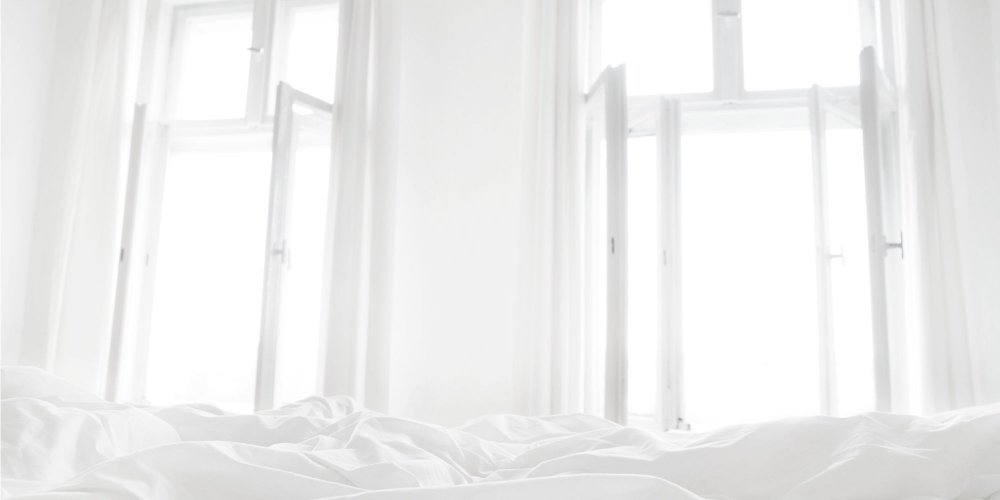When we talk about pollution, we immediately think of the one that is outside, that caused by the smoke from factories and car exhausts. Wrongly.
And indoor pollution in all this?
It is found in our offices, our homes, enclosed places in which we spend most of our time (80%), and bad news: it would be much more dangerous than that found outside.
The National Agency for Food Safety, Environment and Labor (ANSES) believes that this is a major health issue as long-term effects on health are harmful.
Rachid Ait-Namane, interior environment consultant (Ile-de-France region) *, gives us the good habits and habits to adopt for a healthier interior and a pollution-free house.
- We do a complete check-up of his house
In a house, "do not confuse ventilation and ventilation," says Rachid-Ait Namane.
Ventilating is a constant renewal of air using systems such as VMC (mechanical controlled ventilation), exhaust vents and air intakes. These should not be stopped or plugged and require regular maintenance to ensure proper operation.
Airing is the act of temporarily renewing the air by opening windows and doors.
To know if our interior is healthy, we invest in a thermometer to have an eye on the ambient temperature (which should be between 18 and 20 ° C), and possibly in a hygrometer to find the humidity. The latter should ideally be between 40 and 55% to prevent the proliferation of mites or the appearance of molds in particular.
- We are airing
This is the base: every day (even when there is a peak pollution), morning and evening, it opens its windows for about 15 minutes.
In the morning, this aeration allows in particular to lower the level of carbon dioxide (CO 2) in the bedroom. Naturally present in the atmosphere, this molecule is produced by the human body during respiration. Problem: the higher its level, the more the air becomes confined.
We also take the opportunity to shake sheets, duvet and pillows.
- We aspire
Vacuuming (at least twice a week) eliminates dust and dust mites (tiny microscopic bugs that love to curl up in hot, humid places), both of which cause allergies.
Do not forget to put it on the carpets, the sofa, the fabric curtains, the dog / cat basket and the mattress (once a week).
- We clean WITHOUT stripping
Rachid-Ait Namane reminds him: "the house is not a hospital". It is therefore useless to disinfect his house from floor to ceiling with bleach, spray his shower with anti-tartar foam and perfume all the parts with great blows of deodorizing bombs.
On the contrary, this type of products, which boast of "purifying" and "eliminating 99% of bacteria", are far from cleaning our house and only accentuate the pollution of our interior by diffusing volatile organic compounds or semi-volatile (VOC, COSV) in the air.
These fine particles represent a direct danger to our health by inhaling them (cancer, allergies, cardiovascular diseases, headaches, nervous system and various organs ...)
Ditto for scented candles, incense burners, incense, or sanitizing sprays based on essential oils that must be used with caution and parsimony. Especially by people with allergies or asthma.
So we make a gesture for ourselves and for the planet: we return to basic products (and often cheaper) such as baking soda, white vinegar, lemon, black soap, Marseille.
- We dry her clothes (but not just any way)
When drying, the laundry increases the humidity level. Suddenly, it avoids placing his dryer in a room that can not be ventilated and ban the bedroom.
Of course, it is difficult to apply these rules to the letter when living in a studio of 20m2. In this case, our expert advises to equip a Rubson type moisture absorber.
The ideal is still to be able to dry it out.
- We do our work in the spring
At this time, the heaters are permanently extinguished, the outside temperatures rise and it is therefore easier to open its windows.
We then take the opportunity to redo the paint, change the floor or carpet and invest in new furniture (especially those plywood or chipboard).
Why ? Because they contain the famous VOCs and COSVs such as phthalates, carcinogens suspected to be endocrine disruptors, bisphenol A (BPA) found in plastics and which is also accused of being an endocrine disruptor , or emit formaldehyde.
This gas, classified as a carcinogen proven to be human since 2004 by the International Agency for Research on Cancer (IARC), is found mainly in furniture chipboard or plywood.
Solvents in paints are responsible for certain skin diseases, blood, liver, kidney, cancer or even fertility disorders (to name a few).
So at the time of purchase, we think to read the labels and when we start the work, we bring a mask, gloves, goggles (because of possible projections and emissions of volatile substances) and once again: we're airing!
- We smoke outside
Smokers, it's outside! Not only do they poison themselves while smoking indoors, but they also pass on passive smoking to those around them.
The cigarette contains so many toxic substances that it is better not to allow them to infiltrate and stagnate in textiles (clothes, sheets, sofas).
- We do not trust the so-called "depolluting" plants
This is the great trend of the moment, and yet, no solid scientific study proves today that certain plants would clean up its interior.
On the contrary, they produce moisture and their soil contains potentially allergenic substances. Not easy to eliminate pollution in these conditions.
- We invest (or not) in an air purifier
Dyson air purifiers (Pure Hot Cool Link ™ eliminates 99.95% of allergens and air pollutants) can improve indoor air quality. The only problem is that it should ideally be able to put one in each room and investment in this type of product is not trivial.
We therefore privilege his installation in the room in which we are most of the time, or if we have the courage, we move from the living room to the room and vice versa.
* https://interieurenvironnement.com/site/




